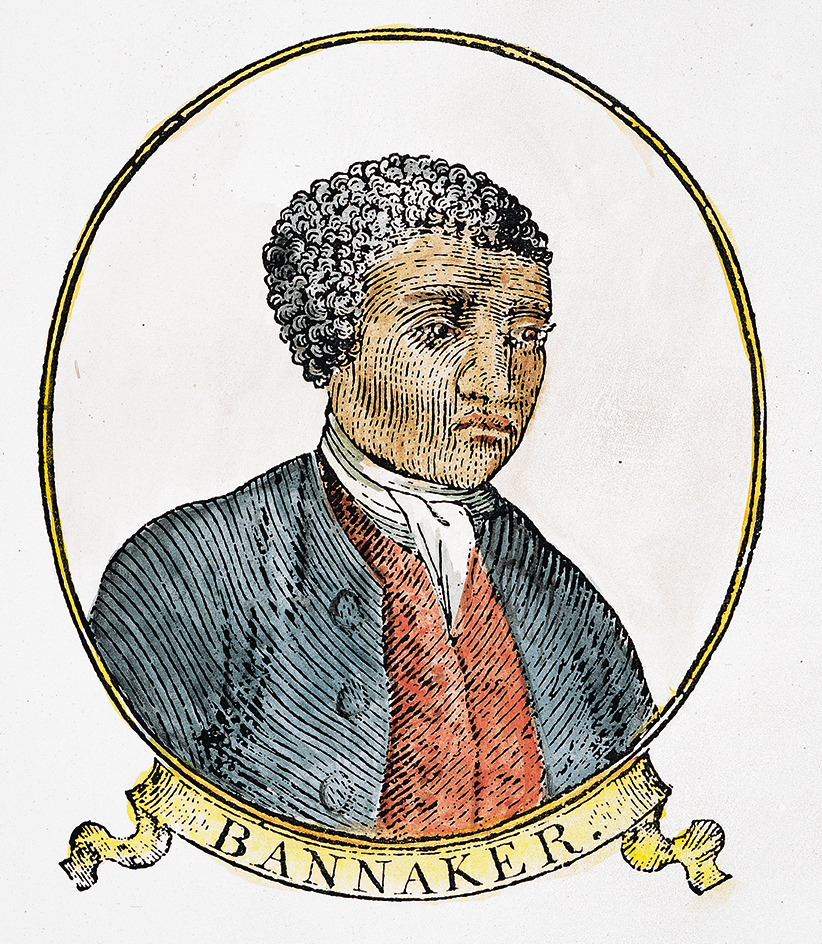Banneker, Benjamin (1731-1806), was probably the best-known African American in early United States history. He was an astronomer, farmer, mathematician, and surveyor.

In 1791, Banneker was an assistant to Major Andrew Ellicott, the surveyor appointed by President George Washington to lay out the boundaries of the District of Columbia. Secretary of State Thomas Jefferson had recommended Banneker for this work.
Banneker was born on Nov. 9, 1731, near Baltimore. His grandmother, an Englishwoman, taught him to read and write. For several winters, he attended a small school open to Black and white students. There he developed a keen interest in mathematics and science. Later, while farming, Banneker pursued his mathematical studies and taught himself astronomy. In 1753, he completed a clock built entirely of wood, each gear carved by hand. His only models were a pocket watch and a picture of a clock. The clock kept almost perfect time for over 50 years.
From 1791 to 1796, Banneker made all the astronomical and tide calculations and weather predictions for a yearly almanac. Banneker sent Jefferson a copy of his first almanac. With it he sent a letter calling for the abolition of slavery and a liberal attitude toward Black people. Banneker’s skills impressed Jefferson. Jefferson sent a copy of the almanac to the Royal Academy of Sciences in Paris as evidence of the talent of Black people. Opponents of slavery in the United States and England also used the almanacs as evidence of the abilities of Black people.
The publishers of Banneker’s almanacs printed contributions by prominent Americans in addition to his material. In the 1793 almanac, for example, the surgeon and statesman Benjamin Rush proposed the appointment of a U.S. secretary of peace. Banneker probably contributed a few proverbs, essays, and poems to the almanac. He died on Oct. 25, 1806.
